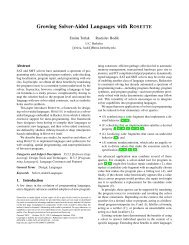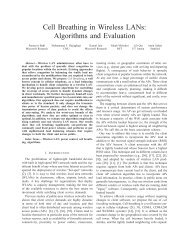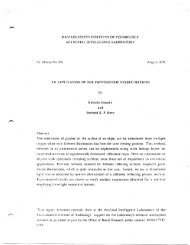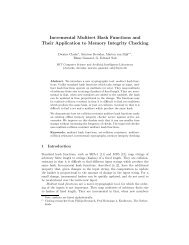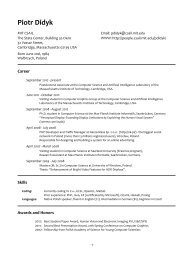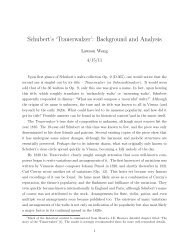On-chip Networks for Manycore Architecture Myong ... - People - MIT
On-chip Networks for Manycore Architecture Myong ... - People - MIT
On-chip Networks for Manycore Architecture Myong ... - People - MIT
You also want an ePaper? Increase the reach of your titles
YUMPU automatically turns print PDFs into web optimized ePapers that Google loves.
work to support specific mechanisms. For instance, directory-based cache coherence<br />
protocols require frequent multicast or broadcast, which is a challenge <strong>for</strong> the on-<strong>chip</strong><br />
network to implement e ciently.<br />
Researchers have taken many di↵erent approaches to on-<strong>chip</strong> networks to overcome<br />
the challenges of manycore architecture. These approaches can be categorized into<br />
circuit-level optimization, network-level optimization, and system-level optimization.<br />
1.2.1 Circuit-level Optimization<br />
Research in this category aims at improving the per<strong>for</strong>mance and reducing the cost of<br />
data movement through better circuit design. For example, a double-pumped crossbar<br />
channel with a location-based channel driver (LBD), which reduces the crossbar<br />
hardware cost by half [88], was used in the mesh interconnect of the Intel manycore<br />
processor [37]. The ring interconnect used <strong>for</strong> the Intel Nehalem-EX Xeon microprocessor<br />
also exploits circuit-level techniques such as conditional clocking, fully shielded<br />
wire routing, etc., to optimize its design [68]. Self-resetting logic repeaters (SRLR) is<br />
another example that incorporates circuit techniques to better explore the trade-o↵<br />
between area, power, and per<strong>for</strong>mance [69].<br />
1.2.2 Network-level Optimization<br />
The logical and architectural design of the on-<strong>chip</strong> network plays an essential role in<br />
both the functionality and per<strong>for</strong>mance of the on-<strong>chip</strong> network. An extensive range of<br />
network topologies have been proposed and examined over the years [18]. Routing [87,<br />
65, 66, 76, 49, 31, 9] is another key factor that determines the characteristics of on<strong>chip</strong><br />
communication. This level of optimization also has a significant impact on the<br />
power dissipation of the network because the amount of energy consumed by on<strong>chip</strong><br />
network is directly related to activity on the network. There<strong>for</strong>e, using better<br />
communication schemes can result in reducing the power usage as shown in [51].<br />
20



